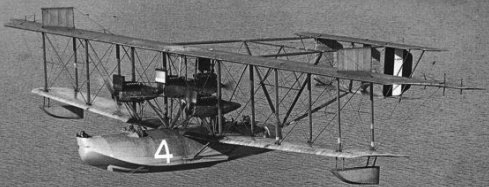HISTORY
 CDR ELMER “ARCHIE” STONE
CDR ELMER “ARCHIE” STONE
Elmer Stone was born in Livonia, New York and grew up in Norfolk, Virginia. He joined the U.S. Revenue Cutter Service as a cadet at the Revenue Cutter Service School of Instruction on April 28, 1910.
Elmer Stone was a United States Coast Guard aviation pioneer; in early 1915 Stone and another officer Norman B. Hall, were the first to suggest that the Coast Guard develop an aviation capability. On March 28, 1916, he was assigned as a student aviator at the United States Navy flight facility in Pensacola, Florida. On April 10, 1917, Stone became the Coast Guard's first aviator upon graduating from flight training at Pensacola and was appointed as Coast Guard Aviator No. 1.
In May 1919 First Lieutenant Elmer F. Stone was one of the two pilots, along with Walter Hinton, on the first successful transatlantic flight. He piloted the NC-4 with Lieutenant Commander Albert C. Read, USN, as the mission commander and navigator.
For the next six years he worked with the Navy's Bureau of Aeronautics where he assisted in the development of the catapults and arresting gear of aircraft carriers, equipment still used on aircraft carriers to this day.

He continued to promote aviation in the U.S. Coast Guard during the 1920s. He collaborated with the Curtiss Aeroplane and Motor Company on development of airborne "motor lifeboats" for the explicit purpose of lifesaving missions, and in this is one of the pioneers of modern air-sea rescue. He also commanded a former destroyer that was turned over to the U.S. Coast Guard and used in the enforcement of Prohibition.

REFERENCES
https://en.wikipedia.org/wiki/Elmer_Fowler_Stone
https://www.history.uscg.mil/Portals/1/Documents/StoneElmerApr2010.pdf
https://media.defense.gov/2018/Jun/04/2001926401/-1/-1/0/ELMER_STONE.PDF